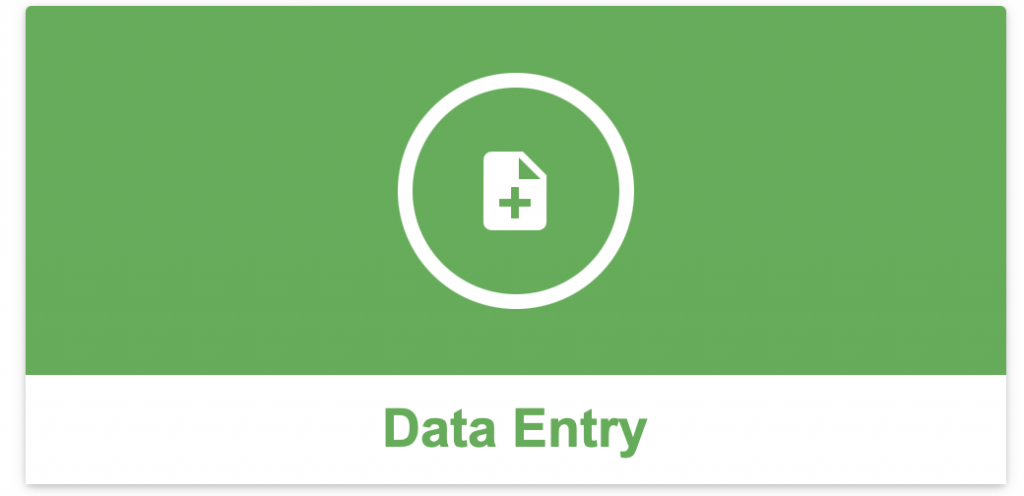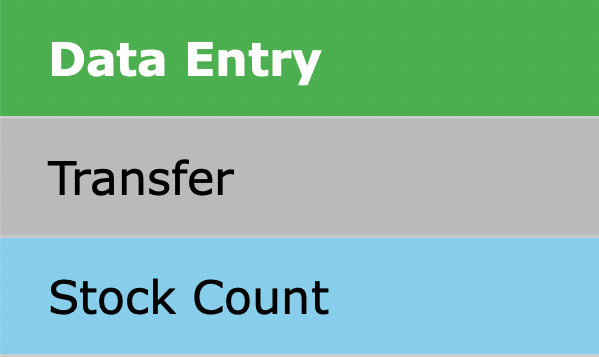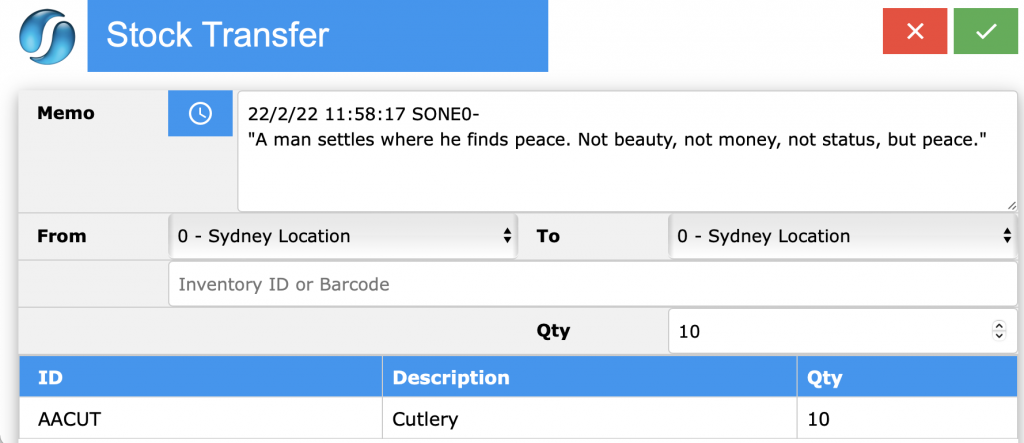Transfer Overview
The Sapphire Web Pack Transfer screen allows the transfer of inventory between two product codes, such as when moving inventory from one location to another. The Transfer is generally used to transfer inventory from one location to another without any other adjustments being made to the inventory transferred.
An Inventory Transfer, is also known as stock transfer or warehouse transfer, is the transfer of physical inventory items from one warehouse location to another. When receiving requests from stores, warehouse staff will move Inventory from warehouse to store. Alternatively, this transfer may be from a batch or bay to a pick face.
Inventory Transfer describes the processing of logistics for transferring inventory from one area of the distribution chain to another. By so doing, it speeds up the handling process of inventory when there is a substantial workload.
Transfer is contained within the Data Entry mode of Sapphire Web Pack. This function allows the user to transfer stock from one location to another. It is exactly the same as a Transfer Entry in Client Server mode. To access it in Client Server mode, go to Inventory > Inventory > Transfer Entry.


This function has been included in the Sapphire Web Pack to allow users to Transfer stock from one Location to another Location. Seen below is the Transfer entry function ready for data entry.

Entering an Inventory Transfer transaction.

- Memo – Enter any Memo
 details required for this Time Sheet. Any alphanumeric notation can be added to the memo..
details required for this Time Sheet. Any alphanumeric notation can be added to the memo.. - Saving – Select the
 Save button to enter the transfer into SapphireOne.
Save button to enter the transfer into SapphireOne. - Canceling – Selecting the
 Cancel button will cause SapphireOne to display the “Are you sure alert”.
Cancel button will cause SapphireOne to display the “Are you sure alert”. - From & To – The first item that the user will select is the, From and the To drop down menus.
- Alert – If both the From and To are set the same, the user will see an alert stating that the From and To are the same when they attempt to process the transfer.
- Inventory ID – Next enter the Inventory ID or input its Barcode. The user will be expected to know the Inventory ID so it is entered without a locations suffix as we are transferring inventory between locations. E.g. AACUT.
- Scanning Barcode – If barcodes have been established for the inventory item, all the user will have to is scan the barcode for the inventory item.
- Quantity – Next go to the Qty data entry field and enter in the quantity that is to be transferred between locations and tab forward.
- Tab Forward – Once the user has tabbed forward, SapphireOne will add the item and display a new line at the bottom of the screen displaying the Inventory ID, Description or Name and the Quantity.
- Next Item – If more items are to be transferred, repeat the procedure above but make certain that the screen is open deep enough so that the user can see the additional lines as they are entered.
The transaction may be viewed from the Inventory menu in the SapphireOne Client Server mode as a TGJ, a Transfer Journal entry.
Dictation and Speech to Text Overview
SapphireOne’s Dictation (MacOS) and Speech to Text (Windows) functionalities revolutionise data entry. These features are available for any data entry field and all inquiry screens within SapphireOne. For instance, when a user makes a call via the SapphireOne Softphone, SapphireOne automatically timestamps the contact and phone number. Post-call, users can dictate notes directly into the CRM contact memo field in relation to the stamp.
This functionality is applicable across all Data Entry screens. As examples, when entering a Vendor Invoice (VI), users can dictate memos directly. Similarly, additional lines can be added to the General Ledger account, with each line having a unique memo field. After an employee interview, users can efficiently dictate notes.
Speech to Text and Dictation are powerful tools that SapphireOne and its clients use daily, significantly saving time.
You can review our Blog and YouTube channel for additional information and resources on SapphireOne ERP, CRM and Business Accounting software.